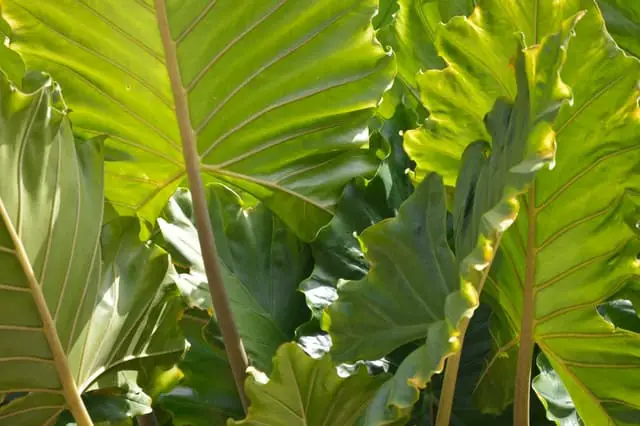Having house plants is really cool, but having one that can become a member of your family is amazing. One thing the Philodendron Bernardopazii teaches us is that a houseplant can be more than just a houseplant.
Philodendron Bernardopazii is a rare and exotic plant that has become increasingly popular among plant enthusiasts. With its striking green and silver foliage, it is a great addition to any indoor garden.
This plant is not just eye candy, it also refreshes the mind and can induce a feeling of calmness in the body. What’s more? There are many other bonus benefits you get if you choose to add this plant to your yard. To know more about this, keep reading this piece.
What Is A Philodendron Bernardopazii?
Philodendrons are technically ‘love trees’. They come from the Greek words, ‘Philo’ meaning love and ‘dendron’ meaning tree. This might explain why they are considered invaluable houseplants and are extremely sought after, despite their rareness.
They exist in about 489 different species, which might come as a surprise to you as they are pretty rare. The problem probably is that they are not efficiently distributed, and just teeny tiny population of people know their worth.
The Philodendron Bernardopazii is one of many species of Philodendron packed with various amazing features. It is an exceptionally beautiful plant, particularly called a ‘rare beauty, with green broadened glossy leaves and white veins.
This species of philodendron is an uncommon collection of philodendrons that may not be found in every nursery and may thus be pricey, but it is an outstandingly attractive plant, and is totally worth it.
Philodendron Bernardopazii is a tropical large-growing and climbing plant, straightforward and easy to care for. They can grow quite large, but can be maintained by pruning regularly, that’s if you want. Not many people want to prune their houseplants, which is okay.
If you want your plant to grow very large, then leave your scissors out of your basic care process. But make sure the plant’s pot can accommodate its growth. Also, as climbing plants, they’d love it if you gave them something to climb, perhaps a moss pole.
They require bright indirect sun exposure, moderate to high temperatures, well-draining regular potting mix, and high humidity. Fully-mature outdoor specimens of this plant can produce flowers and fruits. Although, this may not happen if these plants are kept indoors.
Origin and Classification
Philodendron Bernadopazii originates in the Brazilian rainforest. Originally, it was called ‘Santa Leopoldina’ and then was known as ‘Philodendron superbum’ before it settled on its present name. It can be found in some countries such as in Miami and Florida, etc., grown and used for a variety of purposes.
Features
This species of philodendron has a variety of unique features which altogether explains its benefit. Some of these features are:
1. Plant type
Philodendron Bernardopazii is a type of mesophytic plant you can easily plant in your yard or garden. These plants have an average height of between 6 to 12 feet.
They can also be identified as shrubs due to their long leaves and non-woody branches. They require moderate sunlight for their photosynthetic process, which is an important phase of the plant’s growth.
2. Leaves
The leaves of this plant are rich green with elongated shapes, white veins, and red veins underneath that complements the overall beauty of the plant. The leaf’s shape and structure assist in a better photosynthetic process.
The leaf blade’s broadened form which is directly exposed to sunlight, and the leaf petiole’s greenish color due to the presence of chlorophyll pigment, are also features that support the plant’s photosynthesis process.
3. Stem
There often is a misconception that the leaf petiole connected to the surface of the plant is its stem. The stem of this plant has pinkish hues and white streaks, and every of its leaves are orderly arranged. Stems of small-sized Philodendron Bernardopazii can be invincible due to the leaves’ arrangement. However, as it grows, it can form a beautiful shape if it’s given the proper support.
4. Root system
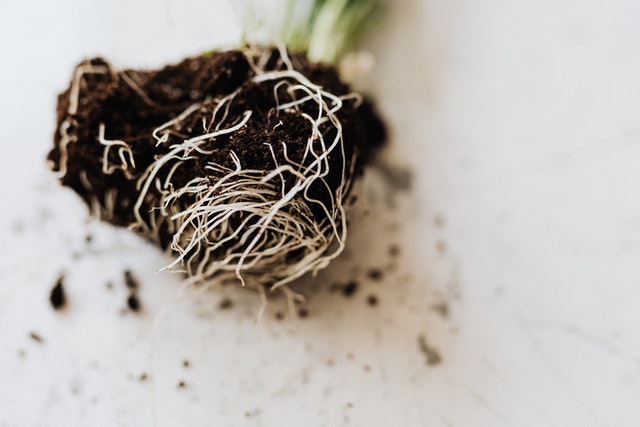
At the initial stage of the plant’s growth, it develops a tap root or deep root. However, as it grows, the deep root is weakened to form an adventitious or fibrous root system which helps it cope as a pot plant and aids its collection of water from the garden soil.
5. Blooming
A Philodendron Bernardopazii normally blooms in the wild. As earlier mentioned, they originated from the jungles of Brazil. Hence, they bloom more often in natural habitats than indoors. However, they can grow indoors. If this happens to your Philodendron Bernardopazii, then consider yourself one of the few lucky ones.
6. Flowers
Like every other part of the Bernardopazii plant, their flowers are elegant and colorful. They are beautiful white-colored flowers that can soothe your heart and make your morning beautiful. Their inflorescence is called a spathe having a light-green inflorescence and beautiful red spots. The spadix is where these flowers are arranged; it is white-green.
7. Growth rate
Although these special plants are not hard to maintain, they require good conditions and materials for their proper growth. They transform into aesthetic shapes when given the proper support and grow faster when they are adequately cared for. What are then these proper conditions that should be adhered to in care for these plants?
Basic Care Of Philodendron Bernardopazii
The growth of the Philodendron Bernardopazii plant is dependent on how much care you shower on it. They are gentle and low-maintenance beautiful plants that require a moderate amount of almost everything to properly grow, a bit of your attention.
They usually need to have support because they are climbing plants. You can grow these plants properly when you know the specific steps to take to care for them, even if you are a busy bee.
We have earlier mentioned some basic care required for this species of plants, this section seeks to give in-depth knowledge on what we already know.
1. Lighting condition
The Bernardopazii plant loves bright indirect sunlight. They can tolerate any kind of light, but grow better when exposed to indirect light. To achieve indirect sunlight conditions, then you should place your plant next to a window and use a white curtain to prevent its direct exposure to sunlight. Otherwise, the effect of direct sunlight on your plant causes yellowing and makes it burn.
2. Watering
Do not overwater or underwater Philodendron Bernadopazii. A moderate amount of watering is perfect for your plant. When overwatered, it causes the plant to develop problems like root rot and pale stems. And when under watered, the plant begins to have stunted growth and black leaves.
Philodendron Bernadopazii should be watered only twice a week in summer and once a week in winter. When you notice the leaves are dry, then you should water them.
3. Soil Criteria
A perfect soil condition for Bernadopazii plants includes having well-drained, lightweight, and permeable soil with high organic matter. In this case, loamy soil is a perfect match for this species of plants.
Loamy soil allows for soil drainage and retains the right amount of water in the soil. Garden soil can also be used, although they are not perfect for this plant.
We advise using some mixtures with the soil, including 20% perlite, peat moss, orchid bark, and coconut fiber. Making the soil well-drained is the most important element that should be considered as without this, it causes root rot in the plant.
4. Temperature
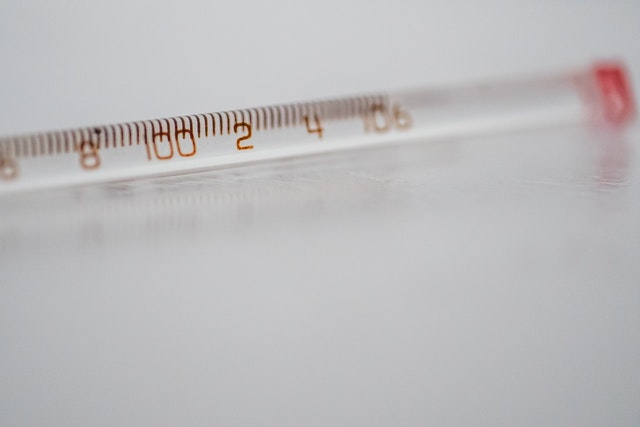
Philodendron Bernardopaziis require a normal temperature for proper growth, precisely 18-27 degrees Celsius or 64 – 81 degrees Fahrenheit which is their optimum temperature. The plant becomes resistant to growth if you put it under hotter temperature, and low temperature causes frost attack and may cause the leaves and stem of the plant to blacken. Therefore, you need to maintain a moderate level of temperature.
5. Humidity
This refers to the percentage amount of water present in the air. It is an important part in caring for Philodendron Bernardopazii plants because many other caring conditions such as watering, are dependent on it.
So, you consider an humidity level of between 60-70% for your plant’s healthy growth. When the humidity percentage is too high, it causes the plant to fall off and become pale. When it is low, it makes the leaves weaken.
6. Fertilizer
A moderate feeding once a week is sufficient for the plant. During its growth stage, you will regularly fertilize so that it happily grows and becomes large and showy. That is the goal of every plant owner.
How To Propagate Philodendron Bernardopazii
The propagation system of Philodendron Bernardopazii is one of the easiest propagation systems that exist. They only require a few steps and you can have your yard filled with a larger population of the beautiful Philodendron Bernardopazii.
Philodendron Bernardopazii is propagated using vegetative propagation. Since they rarely bloom indoors, it is unlikely to find their seeds, thus, two methods can be carried out for their propagation.
- Stem cutting; and
- Air layering
We’ll discuss both methods in details below;
Stem Cutting
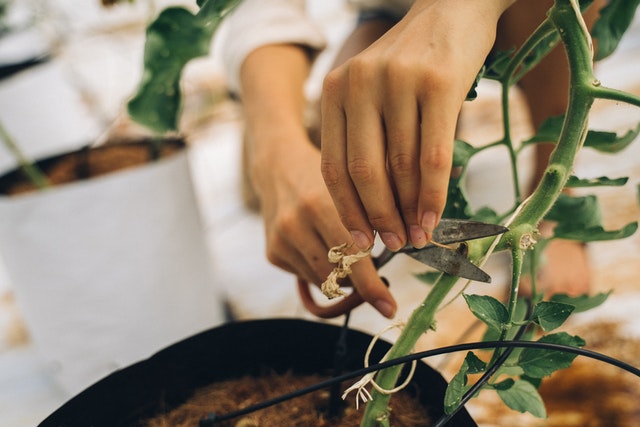
- The first step in the propagation of Philodendron Bernardopazii is preparing the soil. Garden soils can be used in place of loamy soil, with a mixture of fertilizers and other nutritional substances. This will make the soil fertile and ready for propagation.
- Next, cut the stem, with a node and at least one leaf, using a sharp knife.
- Bury the cut part of the plant in the pot filled with the prepared soil, such that the leaf is sticking out. Leave the plant to root for the next one or two months. Ensure you keep the moss moist and maintain high humidity and indirect sunlight until it is fully rooted.
Air Layering
- Make a deep cut to the stem with a knife. Ensure that the plant system is not injured.
- Place rooting hormones in the cut part of the stem and add Sphagnum moss layers to it as well.
- Wrap the wound with polythene.
- When a new plant root develops, take out the seedling and plant it in another pot.
It should be noted that the most suitable and common method of propagation of Philodendron Bernardopazii is the Step cutting method.
Common Problems In Caring For Philodendron Bernardopazii
While caring for this species of plant is relatively easy, there are likely problems that may occur when they are not given the adequate attention required for them to grow happily. Some of these problems include;
1. Root Rot
This is a common problem that arises when caring for Philodendron Bernardopazii. It may develop as a result of overwatering plants. When plants are overwatered, excess water is clogged in the root system. This problem can also occur as a result of poorly drained soil can result in root rot.
If the soil is not well-drained, then the lower surface which is the root will remain wet while the upper surface is dry. So when watered, water accumulates at the root of the plant.
The best solution to this problem is repotting, and this can be done easily. Simply take a new pot and prepare your soil mixture, then pull out the affected plant and plant it in the new pot.
2. Root Bound
Rootbound is a natural problem of Philodendron Bernardopazii. It happens when the plant grows larger due to proper maintenance and care. However, the downside to this growth is that the pot used to plant won’t be able to accommodate this growth, thus, causing congestion. This then suffocates the plant and hinders the growth system of the root. The only solution to this is Repotting.
3. Pest Infestation
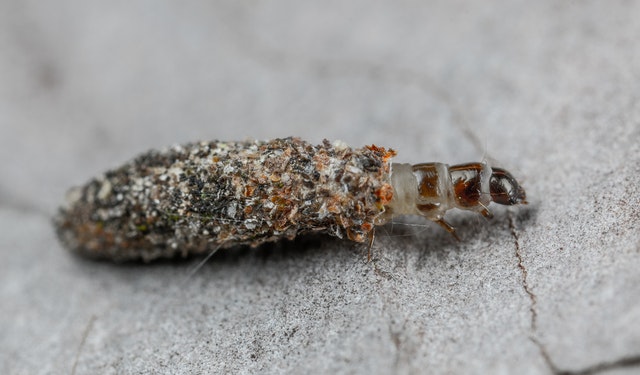
The most common microorganisms that attack Philodendron Bernardopazii are aphids and spiders. They burn the leaves of the plant thereby causing black spots in their beautifully elongated green leaves. This problem can be solved by using a handmade solution. The materials needed for this solution include 4 teaspoons of baking soda and a gallon of water. After mixing this, then spray onto the plant sufficiently.
4. Fungi
Fungus attacks on the leaves or stems of the plant are not uncommon. They regenerate in the cell sap and multiply themselves fast throughout the plant. They can alter the process of the plant’s body by creating root knots.
When you notice that your plant’s leaves have started to burn, then it is an indication of a fungal attack. The best solution to this problem is using baking soda or neem oil. Certain other industrial fungicides like disodium, copper fungicide, etc., can also be used.
See a similar post: Purple Spider Plant
Outro
Generally, Philodendron Bernardopazii is an exceptional houseplant and can be a perfect fit for your room. If you think you will never need a houseplant, then this species is sure to convince you otherwise. And with proper attention to their required conditions and care, they will reciprocate your love by growing into beautiful shapes and making your home attractive.
Also, a bonus gotten from owning this plant is its ability to refresh your mind and calm your body. If you plan to buy Philo Bernardopazii in your home, then you’ve made an excellent choice.
Frequently Asked Questions
Is Philodendron Bernardopazii toxic?
Like most species of Philodendron, Philodendron Bernardopazii can be toxic to both humans and pets. It contains calcium oxalate and direct constant direct contact with this plant can cause skin sensitivity like itching. When caring for the plant, we advise using a glove or any other protection.
Does Philodendron Bernardopazii thrive indoors?
Yes, although they are naturally outdoor plants, they thrive indoors and easily adapt to lower-light conditions. They are becoming a choice able houseplants.
Where can I buy Philodendron Bernardopazii?
As they are a scarce species of plants, they cannot be easily found in nurseries. If you wish to buy them, then you should buy them from garden websites online.

Hey, I’m Lisa and I’ve been an avid gardener for over 30 years. I love writing, talking and living in the garden! Feel free to connect with me on my socials below

